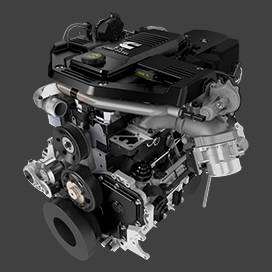12 月 . 04, 2024 16:18 Back to list
how to remove rusted drum brakes
How to Remove Rusted Drum Brakes
Removing rusted drum brakes can be a challenging yet rewarding task if you are looking to save on mechanic fees or simply learn more about your vehicle. This guide will walk you through the necessary steps to effectively remove rusted drum brakes. Before you begin, ensure you have the right tools and safety equipment at hand.
Tools and Materials Needed - Socket set - Wrench set - Screwdrivers (flathead and Phillips) - Brake cleaner - Pliers - Hammer - Rubber mallet - Wire brush - Safety goggles - Gloves - Jack and jack stands - Torque wrench (for reinstallation) - Replacement parts (if needed)
Step 1 Prepare the Vehicle First, ensure that your vehicle is parked on a flat surface and the parking brake is engaged
. Safety is paramount, so make sure to use jack stands instead of relying solely on a hydraulic jack for support.1. Loosen the lug nuts Using a lug wrench, slightly loosen the lug nuts on the wheel where you will be removing the drum brakes. 2. Lift the vehicle Use a jack to lift the vehicle and position jack stands under it for added safety. 3. Remove the wheel Once the vehicle is secured, fully remove the lug nuts and take off the wheel to expose the drum brakes.
Step 2 Inspect the Drum Brake Before proceeding to remove the drums, take a moment to inspect the condition of the brake components. If the drums are heavily rusted, you may need to use a wire brush to clean off some surface rust. This will make it easier to see the retaining hardware.
Step 3 Remove the Drum Brakes Now you are ready to remove the drum brakes.
how to remove rusted drum brakes

1. Locate the screws or bolts Look for retaining screws that might be holding the drum in place. If present, remove them using the appropriate screwdriver or socket. 2. Apply brake cleaner Spray brake cleaner into the drum to loosen any rust or debris. This will help free the drum from any stuck components. 3. Tap the drum If the drum is stubborn due to rust, gently tap it with a hammer or rubber mallet around the edges to help break the rust seal. Be cautious not to damage the drum, as you may need to reuse it. 4. Pull off the drum After loosening it, try to pull the drum straight off. Sometimes, it may be necessary to wiggle it back and forth gently.
Step 4 Address Rusted Components In many cases, removing the drum itself will expose other rusty components, like the backing plate or the brake shoes. Take this opportunity to clean or replace any parts that show significant wear or damage.
1. Clean rusted areas Use a wire brush to scrub away rust from the backing plate, springs, and other components. This will prevent future rust from forming and ensure a clean surface for installation. 2. Inspect brake shoes Check the brake shoes for wear. If they are too thin, it’s recommended to replace them.
Step 5 Reinstallation (if applicable) If you plan to reinstall the drum brakes or replace any components, here are the steps to follow
1. Install new brake shoes If you are replacing the brake shoes, follow the manufacturer’s instructions to attach the new shoes properly. 2. Position the drum Gently slide the drum back onto the wheel hub. 3. Secure with screws Reinstall any retaining screws or bolts you removed earlier. 4. Reinstall the wheel Place the wheel back on the hub, hand-tighten the lug nuts, then lower the vehicle and tighten the lug nuts fully.
Conclusion Removing rusted drum brakes can be a time-consuming process, but with patience and the right tools, it is certainly achievable. This task not only saves money but also enhances your understanding of vehicle maintenance. Always remember to conduct a thorough inspection and cleaning to prevent rust from affecting your brakes in the future. If you encounter any unexpected issues beyond your expertise, do not hesitate to consult a professional mechanic for assistance. Happy repairing!
-
Brake Drum for Kamaz Trucks Durable OEM Replacement & High Performance
NewsMay.30,2025
-
Brake Drum Man High-Quality Drum Brake & Shoe Solutions
NewsMay.30,2025
-
High-Performance Brake Drum for Kamaz Trucks Durable Drum Brake Components
NewsMay.29,2025
-
Brake Drum Man High-Quality Drum Brake Drums & Brake Shoes
NewsMay.29,2025
-
Brake Drum MAZ High-Performance & Durable Replacement Parts
NewsMay.29,2025
-
heavy truck brake drums
NewsMar.07,2025
